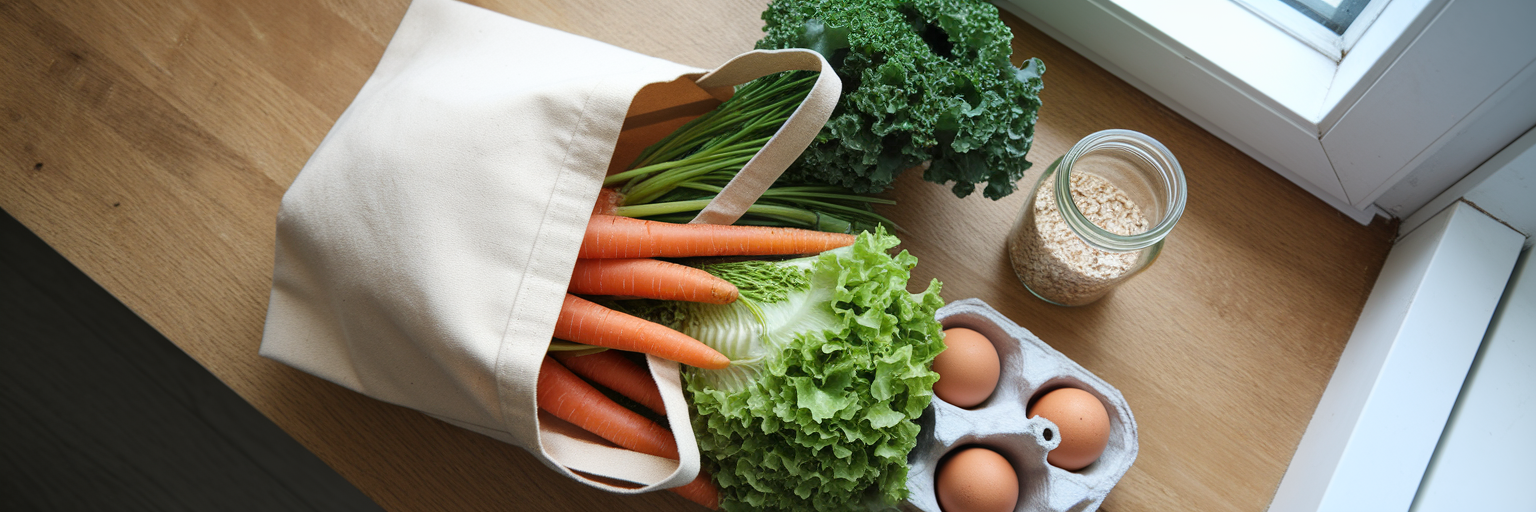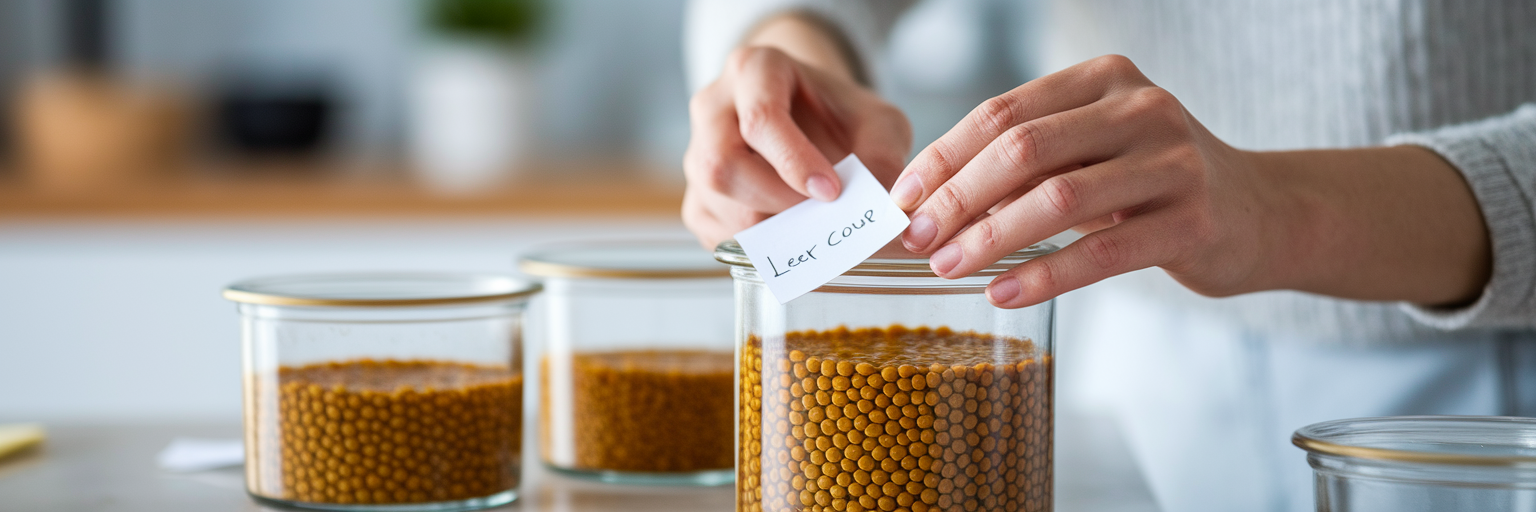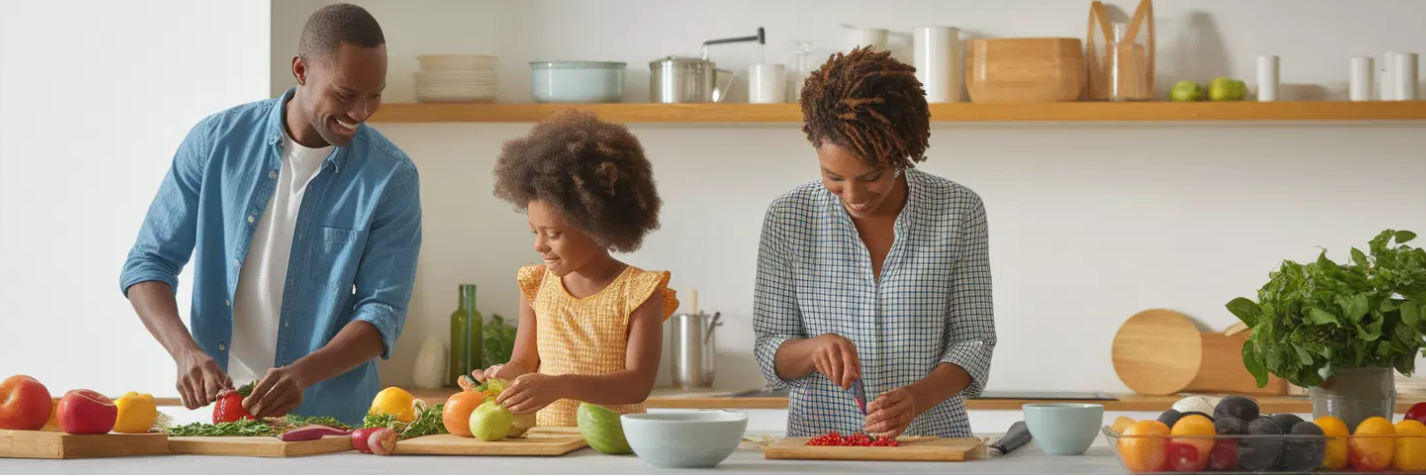According to the USDA, an estimated 30 to 40 percent of the food supply in the United States goes to waste. For families, this translates into throwing away hundreds, if not thousands, of dollars each year. This guide offers a practical approach to reclaim that money and food, starting not in the grocery store, but right in your own kitchen.
Start With a Kitchen Inventory
The most effective way to begin zero waste meal planning is to adopt a simple philosophy: shop your pantry first. Before you even think about recipes or grocery lists, you need a clear picture of what you already own. This initial assessment is the foundation for breaking the cycle of over-purchasing and letting good food spoil.
Conducting a kitchen inventory doesn't have to be a massive chore. Think of it as a quick audit to identify your assets. A structured approach makes it manageable and reveals immediate opportunities for how to reduce food waste.
Perishables: Start with the items that have the shortest lifespan. This includes fresh produce in the crisper drawer, dairy products, and meats that need to be used within a few days. These are your top-priority ingredients.
Pantry Staples: Next, move to your shelves. Take stock of grains like rice and pasta, canned goods, oils, vinegars, and spices. Note anything you have in duplicate or items that have been sitting there for a while.
Freezer Items: Finally, peek into your freezer. You might find forgotten frozen fruits, vegetables, meats, or even pre-made meals that can easily be incorporated into your plan.
This simple categorization creates an instant action list by highlighting your 'at-risk' ingredients. Suddenly, that half-used bunch of cilantro or the carton of yogurt nearing its date is no longer a problem but a starting point. This process also brings a sense of control, reducing the mental load of staring into a full fridge and wondering what to cook.
Build Your Meal Plan from Available Ingredients
With your inventory complete, you can shift your approach from the traditional "recipe-first" method to a more sustainable "ingredient-first" strategy. Instead of finding a recipe and then buying all the ingredients, you build meals around what you already have. This is the creative heart of zero waste meal planning.
This is where you turn potential waste into delicious opportunities. Those browning bananas on the counter are not a failure; they are the perfect base for a moist Banana Bread. That bag of spinach starting to wilt can be transformed into a vibrant Lemony Spinach and Garlic Soup. And the leftover roasted chicken from Sunday dinner? It’s the star of next-day tacos or a hearty salad. This mindset makes using leftover ingredients feel less like a chore and more like a creative challenge.
Of course, you don't have to be a culinary genius to make these connections. Technology can be a powerful ally here. An AI recipe generator removes the guesswork entirely. Apps like EasyChef allow you to input the ingredients you have on hand, from that lonely sweet potato to a can of black beans, and instantly receive tailored recipe suggestions. It takes the creative burden off your shoulders and provides immediate, practical solutions.
It’s also wise to build a flexible meal plan. Instead of a rigid seven-day schedule, aim to plan four or five main dinners for the week. This built-in flexibility accounts for nights you’ll eat leftovers, decide to order takeout, or simply don’t have the energy to cook. An overly ambitious plan often leads to unused groceries, defeating the purpose.
Shop Smartly for a Waste-Free Kitchen
Once you have a meal plan based on your existing inventory, you can finally create a grocery list. This list should be strategic, filling only the specific gaps needed to complete your planned meals. Every item you add to your cart must have a purpose. This mindful approach is key to maintaining a waste-free kitchen.
To help you stay on track, here are a few smart grocery shopping tips that address common pitfalls:
Buy in Appropriate Quantities: While it makes sense to buy pantry staples like rice and pasta in bulk, purchase fresh produce in smaller, more frequent amounts. This ensures you use it at peak freshness instead of watching it wilt in the fridge.
Resist Tempting Deals: Be cautious of "2-for-1" offers on perishable items like bagged salads, berries, or avocados. Unless you have a concrete plan to use both items before they spoil, that "deal" often turns into waste.
Stick to the List: Grocery stores are designed to encourage impulse buys. Those snacks at the end of the aisle and the candy at the checkout counter are placed there for a reason. A firm commitment to your list saves money and prevents clutter.
If you want to reset your habits, consider a "pantry challenge" or a "no-buy week." Frame it not as deprivation but as a fun exercise to get creative with what you already own. It’s a powerful way to clear out older stock and rediscover forgotten ingredients, reinforcing a more resourceful mindset.
Master Batch Cooking and Smart Storage
Making your food last longer and your weeknights easier is the next step. For anyone interested in meal prep for beginners, the dual benefits of batch cooking are clear: it saves precious time during the week and ensures the ingredients you planned for actually get used.
However, a more flexible approach to meal prep often works better than creating five identical meals. Instead of cooking entire dishes, prepare versatile components. For example, cook a large batch of quinoa, roast a tray of mixed vegetables, and grill several chicken breasts. These prepped ingredients can be quickly assembled into different meals throughout the week, like grain bowls, salads, wraps, or stir-fries. This method prevents flavor fatigue and gives you more freedom.
Proper storage is just as important as smart cooking. Knowing how to store different types of produce can dramatically extend their life. Here are a few solutions to common problems:
| Ingredient | Common Problem | Smart Storage Solution |
|---|---|---|
| Leafy Greens (Spinach, Kale) | Wilting and getting slimy | Wash, dry thoroughly, and store in a container lined with a paper towel. |
| Fresh Herbs (Cilantro, Parsley) | Going limp and brown | Trim stems and place in a jar with an inch of water, like a bouquet of flowers. |
| Avocados | Browning too quickly | Store whole at room temperature; once ripe, move to the fridge to slow ripening. |
| Onions & Potatoes | Sprouting or rotting | Store separately in a cool, dark, dry place. Storing them together accelerates spoilage. |
| Berries | Growing mold | Rinse with a diluted vinegar solution (1 part vinegar, 3 parts water) before storing. |
Your freezer is also a critical tool for preservation. Get into the habit of labeling everything with the contents and the date it was frozen. For detailed guidelines on maintaining food quality and safety, you can consult authoritative sources like the USDA's guide to freezing food safely.
Track and Adapt for Long-Term Success
The final piece of the puzzle is building a sustainable, long-term habit through observation and adjustment. This isn't about achieving perfection; it's about being mindful. Take a moment to notice what you still end up throwing away. Do you consistently toss half a bag of arugula or the last few slices of bread? Recognizing these patterns allows you to make small tweaks to your shopping habits next time.
It's also helpful to understand food date labels. In the U.S., "Best By" and "Sell By" dates are typically indicators of peak quality, not food safety. Instead of tossing food automatically, trust your senses. Your eyes and nose are often the best judges of whether food is still good to eat.
A simple but highly effective strategy is the "Eat Me First" box. Designate a clear container or a specific shelf in your fridge for items that need to be used soon. This visual cue keeps at-risk ingredients top-of-mind for everyone in the household, making it easy to grab them for a quick snack or meal.
Ultimately, the goal of zero waste meal planning is progress, not perfection. Every small, consistent change you make adds up to significant long-term savings, less food waste, and a more sustainable and organized kitchen.












